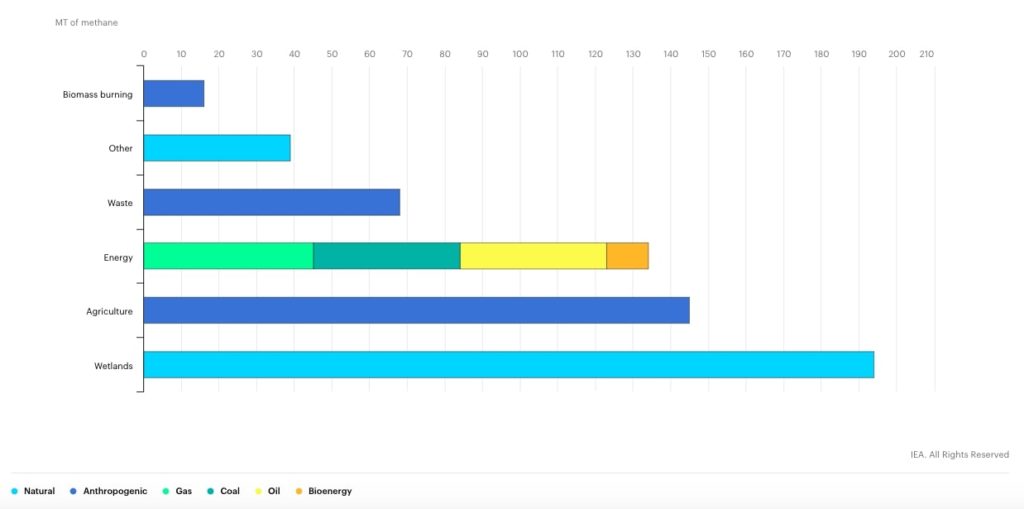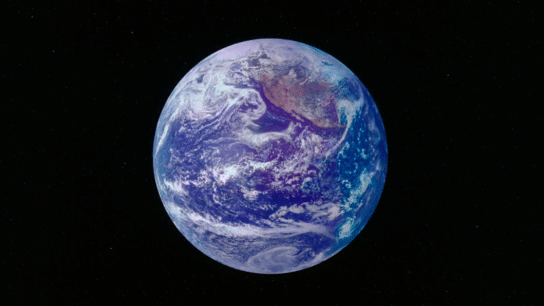Methane is a greenhouse gas that is far more potent than carbon dioxide, making it vital to mitigate. The concentration of methane in the atmosphere is around 2.5 times greater than pre-industrial levels and is increasing steadily. While estimates of annual methane emissions are subject to a high number of uncertainties, estimates suggest that annual global methane emissions are around 570 million tonnes (Mt). This includes emissions from natural sources (around 40% of emissions) and anthropogenic (the remaining 60%). Which sectors are the biggest sources of methane emissions?
—
According to the graph below, the largest sources of anthropogenic methane emissions is agriculture, responsible for around a quarter of the total, closely followed by the energy sector, which includes emissions from coal, oil, natural gas and biofuels.
You might also like: Hong Kong Prices USD$2.5 Billion of Green Bonds, Offers First 30-Year Green Bond

Graph showing sources of methane emissions (Source: IEA).
Here is a more detailed breakdown of methane emissions:
- Wetlands- 194Mt
- Agriculture- 145Mt
- Energy- 134Mt (broken down into: gas- 45Mt, 39Mt, 39Mt, 11Mt)
- Anthropogenic- 68Mt
- Other (natural)- 39Mt
- Biomass burning- 16Mt
According to the International Energy Agency (IEA), two characteristics determine the impact of different greenhouse gases on the climate: the length of time they remain in the atmosphere and their ability to absorb energy. Methane has a much shorter atmospheric lifetime than CO2 (around 12 years compared with centuries for CO2) but it, as mentioned above, is a much more potent greenhouse gas, absorbing much more energy while it exists in the atmosphere.
One way to combine these factors to estimate the effect on global warming is the global warming potential (GWP) metric, used to express a tonne of a greenhouse-gas emitted in CO2 equivalent terms, in order to provide a single measure of total greenhouse-gas emissions (in CO2-eq).
The GWP for methane is between 84-87 when considering its impact over a 20-year timeframe (GWP20) and between 28-36 when considering its impact over a 100-year timeframe (GWP100). This means that one tonne of methane can be considered to be equivalent to 28 to 36 tonnes of CO2 if looking at its impact over 100 years.
Governments need to work to mitigate methane emissions, especially from difficult-to-detect sources like methane leaks. Satellites are very effective at finding these leaks, and are becoming increasingly accurate and effective.

















